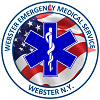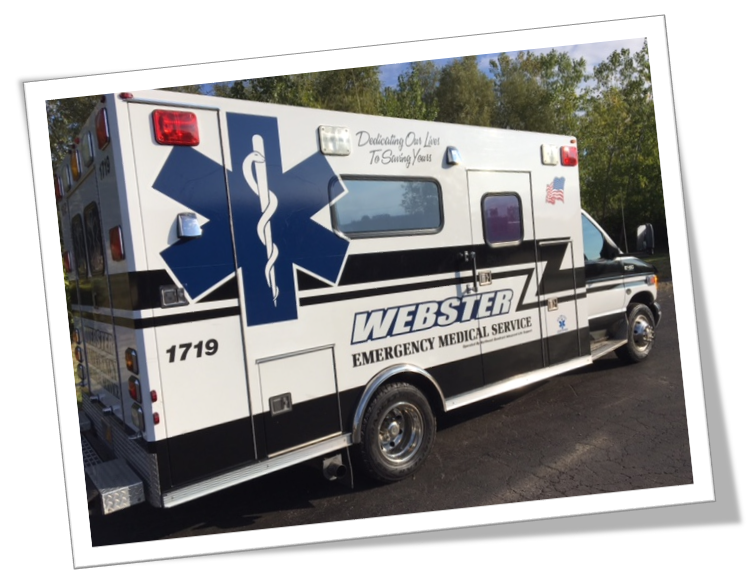Dedicating Our Lives to Saving Yours

What is the Webster Emergency Medical Service
The town of Webster, bordered by Lake Ontario to the north and Irondequoit Bay to the west, offers many recreational opportunities for both summer and winter on water activities, from water skiing, to boating, to ice fishing. This same abundance of surrounding water offered challenges though when providing emergency medical services. Historically, EMS calls which West Webster and Union Hill could not cover in Webster were mutual aided to neighboring town’s ambulance agencies. The challenge for providing mutual aid is that, unlike towns bordered on all sides by other municipalities, the lake to the north eliminates mutual aid from that direction and with the limited access from the west into Webster due to the bay, there are times when mutual aid ambulances would take a longer time to reach you in an emergency.
In a partnership with the town leaders, a plan was developed that would utilize existing in-town EMS providers to reduce the number of calls that needed to be mutual aided. The town was granted an operating certificate by the New York State Department of Health to provide an additional in-town ambulance service, called the Webster Emergency Medical Service. Webster EMS has contracted with the Northeast Quadrant Advanced Life Support, Inc. (NEQALS) to provide the ambulance and equipment, along with the qualified EMTs, to provide this ambulance service to the town. This service does not receive any tax revenue to operate, calls for service are billed to the patient's insurance provider. NEQALS, as the provider of this service, is the agency that will be responsible for all aspects of Webster EMS's operations and billing.
Since its formation Webster Emergency Medical Service has become the sole provider of ambulance services in Webster. Webster EMS will continue to ensure that the residents of Webster receive the highest quality and most timely emergency medical care and that can adapt to the ever growing challenges of providing prehospital care in the years to come.
